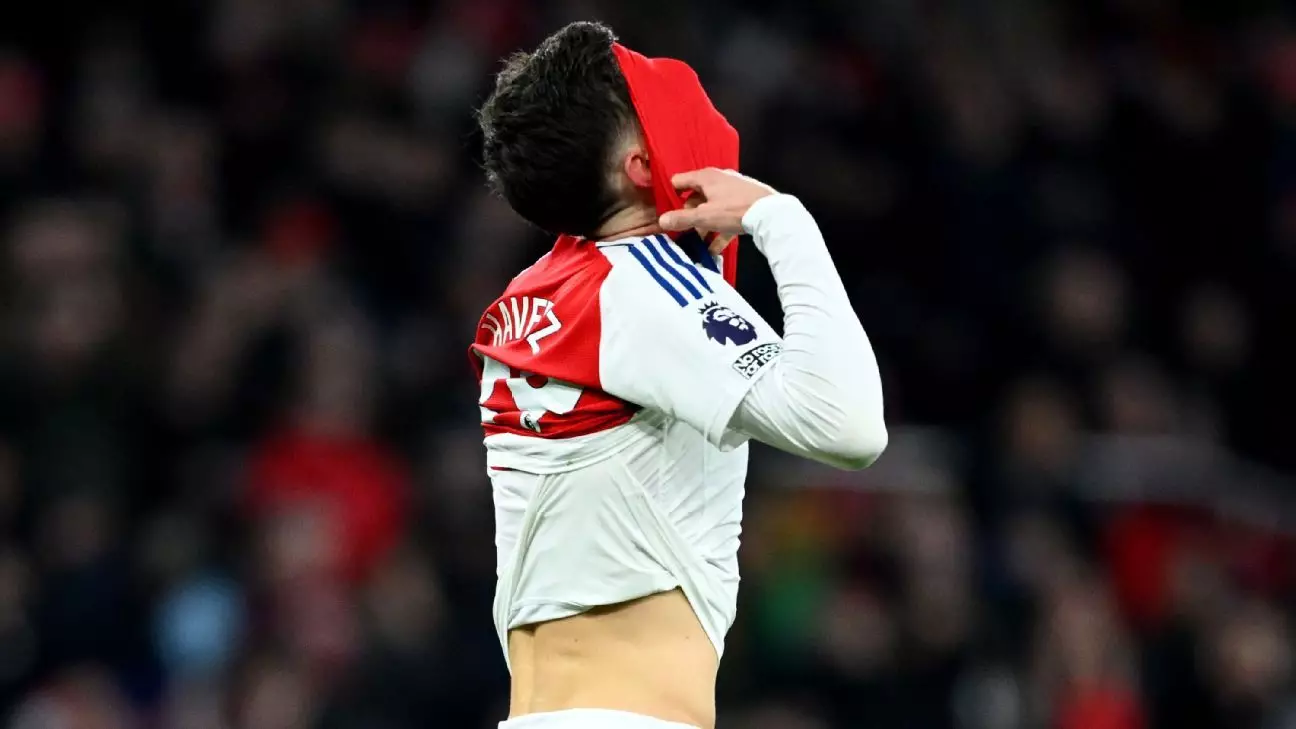Arsenal FC has announced a disheartening setback as Kai Havertz has been ruled out for the remainder of the season due to a hamstring injury. This injury occurred during a training session in Dubai, a significant part of the club’s midseason preparation. Arsenal confirmed that Havertz will require surgery shortly and will then embark on an extensive rehabilitation process. With the team already missing Gabriel Jesus—who is out for the season following knee surgery—the absence of Havertz underscores a critical shortage in attacking options for Mikel Arteta’s squad.
This injury not only limits the tactical flexibility of the team but also raises questions about the club’s strategies in player acquisitions. Havertz had made an impressive 34 appearances this season, emerging as the club’s top scorer with 15 goals, thus his absence will leave a considerable void in Arsenal’s offensive capabilities.
The timing of Havertz’s injury could not be worse for Arsenal. The club was already facing significant challenges in attack, and with Gabriel Jesus also sidelined, they now lack an experienced striker. Following the news, the pressure intensifies on coach Mikel Arteta as he must navigate through a tight schedule without a recognized center-forward. The club’s initial strategy of not recruiting another striker during the January transfer window is now under intense scrutiny.
Arteta had previously acknowledged the team’s need for more attacking options, especially after a rejected £40 million bid for Aston Villa’s Ollie Watkins. This decision could haunt the management as the season progresses, especially without any robust alternatives available. Arsenal’s pursuit of younger talents like Benjamin Sesko and Alexander Isak did not materialize, prompting doubts about whether the club was adequately prepared for the rigors of the season.
Interestingly, even prior to Havertz’s injury, there was a glimmer of hope for Arsenal’s attacking lineup following the light training return of Bukayo Saka. Saka, who had missed crucial matches since sustaining his own hamstring injury against Crystal Palace in December, could provide much-needed support upon his return. Nevertheless, relying on a player returning from injury poses its own risks and uncertainties.
The club’s focus now shifts to nurturing Saka’s return while managing the recovery protocols for both Havertz and Jesus. The next few weeks will test not only the depth of talent at Arsenal but also the resilience and strategic acumen of Mikel Arteta as he seeks to steer his team through such daunting circumstances.
Looking Ahead
As Arsenal braces for the remainder of the season, the situation serves as a critical lesson about squad depth and injury management. The injury crisis will compel the management to reconsider their strategies in the upcoming transfer windows and develop a more robust plan to avoid future pitfalls. Supporting Havertz through his recovery and ensuring that the team emerges stronger will be the priority for Arsenal as the season inches closer to its conclusion.

